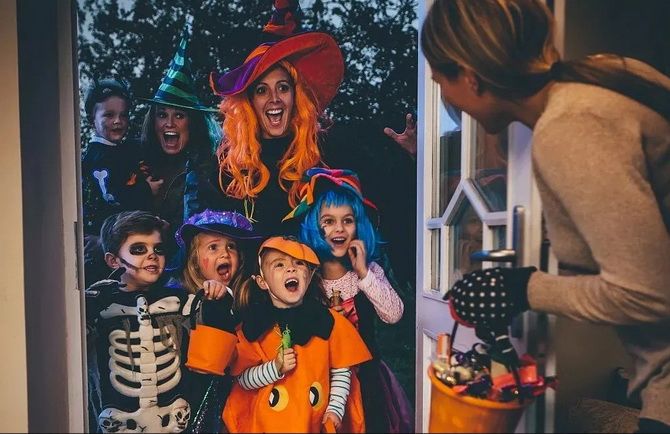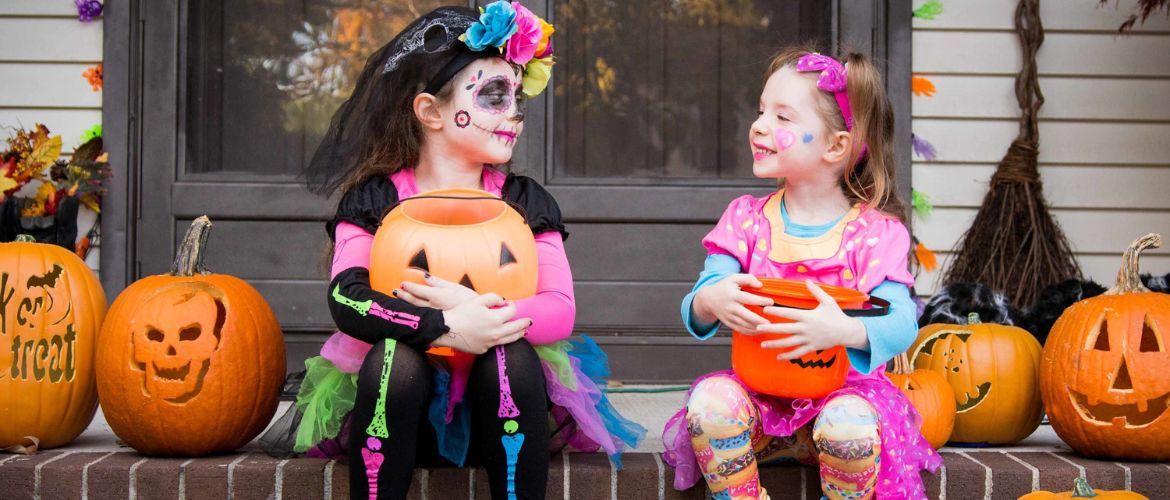Halloween is an annual holiday that takes place in many countries on October 31st. The ancient Celtic action originally had the name Samhain, which eventually transformed into Halloween – short for “All Hallow Even”. According to beliefs, the spirits of the dead could come back to life to harm people. The practice of scaring away evil spirits has led to many of today’s Halloween traditions – dressing up in spooky costumes, placing jack-o’-lanterns and other scary paraphernalia around the house. So there was a custom to beg for sweets with the help of comically threatening phrases.
Trick or treat – how people ask for a treat in different countries

Begging for treats in the form of an ultimatum is one of the main entertainments on Halloween. This is usually done by children who go from house to house in groups and menacingly declare to the owners of the dwelling: Trick or treat?
In a Scottish tradition called Guising, children dressed up in costumes and pretended to be evil spirits while ‘masquerading’ in the street. It was believed that, in this way, they merged with the wandering evil spirits and remained safe. Children who came to the house in this “disguise” received sweets or fruits to ward off evil. They sang songs, told a poem, told jokes, or did some trick before taking their treat. The saying “Trick or Treat” has only recently become common in Scotland. Before that, the phrase was usually pronounced: “Help the Halloween Party”.

In Ireland, there was the concept of Souling, when the poor visited the homes of rich people and received cakes in exchange for a promise to pray for the souls of their deceased loved ones. Later this tradition was picked up by children who went from door to door asking for food or money. In the modern version, they knock on the doors of houses and greet the owners with the words “Trick or Treat.” If they are not given a treat, they can play a trick on the owners or arrange a little dirty trick on them.

The tradition of begging for sweets with the ultimatum phrase Trick or treat is now widespread in Canada, the USA, Great Britain, and Puerto Rico. In northwestern and central Mexico, this practice is called calaverita (a diminutive of the Spanish word calavera, “skull”). Instead of “Trick or Treat,” children ask, “Me dami calaverita?” (“Can you give me my little skull?”). They are given sugar or chocolate treats in the form of small skulls.
In Portugal, on the morning of November 1, children participate in a tradition known as Pão-por-Deus. They knock on their neighbors’ doors, but instead of shouting “Trick or Treat,” they say “Pao-por-Deus,” which means “bread for God.” In return, they are given small toys, sweets or bread.

Although Halloween itself is not widely celebrated in France, All Saints’ Day is celebrated here on November 1st. This is a day of remembrance and veneration of departed relatives and ancestors. Walking around the neighbors’ houses in creepy costumes is not often practiced, although it is starting to become popular. In France, children who come to the door ask: “Les bonbons ou un sort?” – which translates as “Candy or a spell?”
Read also:
Decorating your home for Halloween How to paint your face for Halloween
Halloween witch image
35+ DIY Halloween Pumpkin Ideas







Only registered users can leave comments